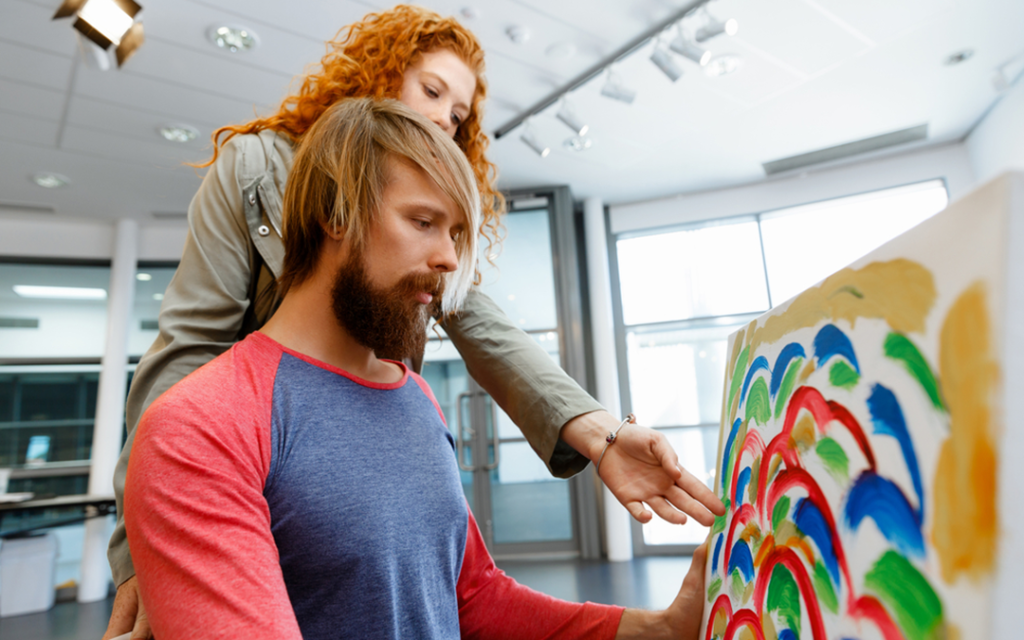Art Therapy: The Therapeutic Power of Creation

By Jacqueline Scheffler, MA, ATR-BC, LPC, CCTP
The Essence of Art Therapy
Art therapy is an intervention that combines the creative process through utilizing art materials, psychotherapy methods and the human experience to improve a person’s overall well-being. Through the creative process and a chosen medium, people are given the opportunity to explore all aspects of themselves. With this process, the hope is to guide individuals to a place of full autonomy and control of their own lives. The creative process can allow people to tap into their potential and aid them in exploring deeper issues to help manage their behaviors and feelings. By using lines, shape and color throughout the creative therapeutic process, a person’s thoughts and feelings can be expressed in a way that goes beyond words.
The Architects of Healing: Art Therapists
Art therapists are trained in both art and psychological methods. Every art therapy session is facilitated by a masters-level clinician who is board certified (ATR-BC), or who is working towards their certification with supervision. To gain board certification, each art therapist must complete 1000 supervised hours and pass a national exam to ensure safety of clients and clinicians. With the guidance of an art therapist, people can focus on their emotional, physical, and cognitive well-being.
The Multifaceted Benefits of Art Therapy
Through art therapy, individuals can cultivate::
- Emotional and Self-regulation
- Foster self-esteem and self-awareness
- Interpersonal relationships
- Coping skills
- Mindfulness
- Stress and anxiety reduction
- Cognitive and sensory-motor functioning
Art therapy is a versatile tool that can benefit anyone, regardless of age or background. Whether applied to individuals, groups, families, or entire communities, its adaptability allows it to be used across various setting to address a wide range of conditions:
- Trauma
- Traumatic Brain Injuries
- Cancer, chronic pain
- Anxiety, and Depression
- Natural Disasters
- Gun Violence
- ADHD/ADD
- Grief
Art therapy can be used in hospitals, private practice, schools, veterans’ centers, senior centers, psychiatric and rehabilitation facilities. In these settings, art therapy may look different, but the overall goals are similar: to provide people a safe space to creatively express their feelings and process the entirety of the creative experience and product.
Why Consider Art Therapy?
No one needs to be an artist or feel that they need to be good at art in order to want to improve their overall well-being. Art therapy promotes healing through exploring deeper into one’s experiences and using artistic expression to grow into their best self. Traditional therapy can sometimes be intimidating for people as verbal communication about their feelings can be difficult. Art therapy is about the journey, not the masterpiece. Rather than focus on verbal dialogue, art therapy embraces the unsaid, the felt, the experienced. It offers individuals the confidence to express, to grow, and to heal. After all, sometimes, the spaces between words hold the most profound truths, and art gives them a voice.
About Art Therapy at The Lincoln Center for Family and Youth
At TLC, we deeply believe in the incredible potential of art therapy to foster emotional growth, empower self-expression, and enhance overall well-being. Our art therapy program introduces a unique and innovative approach to healing, intentionally designed to cater to individuals of all backgrounds, ages, and life experiences.
To learn more visit: TheLincolnCenter.com/art-therapy